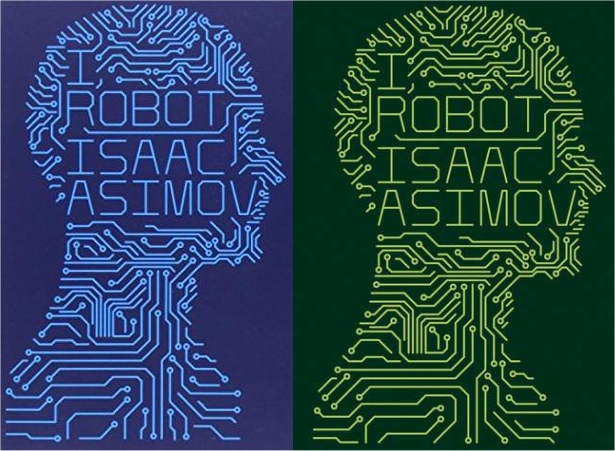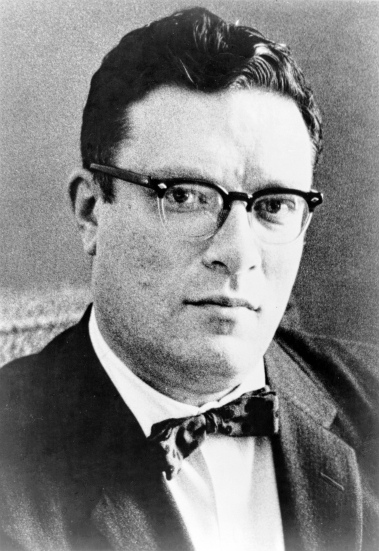Isaac Asimov’s
I, Robot
“To you, a robot is a robot. Gears and metal, electricity and positrons. —- Mind and iron! Human-made! If necessary, human-destroyed! But you haven’t worked with them, so you don’t know them. They’re a cleaner, better breed than we are.”
Susan Calvin

On the back cover of the edition I’m holding in my little claws –HarperVoyager 2013, since you ask – the blurb simply gives Asimov’s famous Three Laws of Robotics. It then adds the sentence: But what happens when a rogue robot’s idea of what is good for society contravenes the Three Laws?
Yes…well, that may not be false advertising, strictly speaking and perish the thought; but it certainly is slippery of you, Clarice.
It’s not much of a guess that the publishers wanted to tie it in pretty solidly with the film of the same name that was ‘inspired by’ Asimov’s book. Problem is that the film has almost nothing in common with the book. (Incidentally, I rather enjoyed it, despite the aggravating presence of that insufferably smug git known to the world as Will Smith.)
Re-reading I, Robot so many years after first encountering it, the first thing that surprised me was that Asimov wrote the first of the nine short stories when he was only twenty years old and the last before he turned thirty. So it’s a young man’s book. It is science-fiction of the classic kind and reading it so soon after Robert Heinlein’s Starship Troopers I was reminded again of just how much these authors got spectacularly wrong when predicting the future.
And it’s not the big things that hit me so much; not the fact that we’re not yet mining on Mercury or anywhere close to inventing a warp drive that will solve the problem of interstellar travel. Rather, it’s the odd feeling you get at so many people reading newspapers instead of peering at their phones or tablets; or the image of people lighting up a cigarette or a fat cigar and puffing across the table after a meal.
Spread over the decade that encompassed the 40s, the stories were collected into a coherent whole and published as a novel by Gnome Press in 1950, with Asimov supplying a framing device that has the robopsychologist Susan Calvin telling the story of robotics “from the beginning, when the poor robots couldn’t speak, to the end, when they stand between mankind and destruction.”
The earlier tales are the most dated, with the robots coming across as almost cartoonish. Nor is this helped by the clownish two-dimensional field workers, Powell and Donovan. Good Lord, some of the dialogue is downright painful here; and to be honest, I think that today this would be put in the Young Adult section.
And yet…what can I say? I bought into Asimov’s pseudohistory and ended up devouring the book in a couple of sittings. For all its faults I can see why it seems to have been rarely out of print. It really is oddly compulsive.
The second half is better, where we become aware of just how much of the world is coming under the control of these benevolent intelligences.
As with say, Philip K. Dick’s We Can Build You or Kubrick & Clarke’s 2001: A Space Odyssey, we prefer the robots to the people – although I must admit to having been rather taken by the plain, frosty and herself rather robotic, Susan Calvin.
The other thing that I had forgotten was that I, Robot serves as a prelude to Asimov’s Foundation trilogy, another of the cornerstones of classic science-fiction history. And now I’ll be damned if I don’t want to read that series again.
I wonder how they will stand up?



Recent Comments